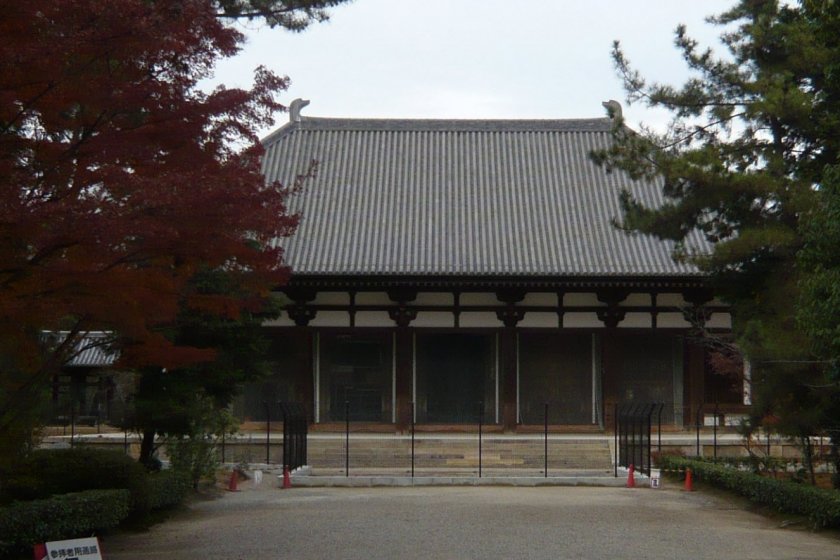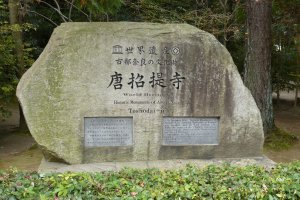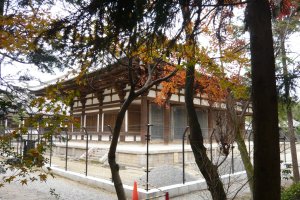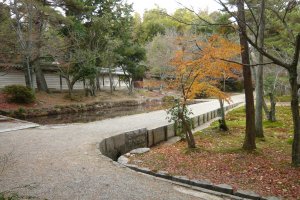Although Tōshōdaiji Temple is located in what today seems to be the outskirts of Nara, 1200 years ago when Nara was the capital of Japan, this area was a central block of the city. It was in 759 A.D. that Emperor Tenmu’s son, Prince Nitabe Shinnō granted the land for the establishment of this temple. The name Tōshōdaiji is derived from the fact that it’s first chief abbot, Ganjin, was from Toh, of the Tang Dynasty in China, and that this temple (ji) was founded as a place for Buddhist training under his guidance. Tōshōdaiji Temple is also known as Kenshoritsuji, which comes from the fact that it was the first temple in Japan to be devoted to one of China’s Buddhist denominations, the Nanzan sect. Today, Tōshōdaiji is regarded as the Head Temple of Japan’s Ritsu school denomination of Buddhist teachings.
As a high priest in Daimyōji Temple in China, the founder of Tōshōdaiji, Abbot Ganjin (also known as Kakai-taishi) was invited to Japan by Emperor Shōmu to teach Chinese Buddhism doctrine. Ganjin accepted the great task and his determination was unfettered as it took him twelve years and five unsuccessful attempts at crossing the ocean and ultimately suffering from blindness before he arrived in Nara in 754 A.D. In Japan, Ganjin had an ordination platform created in front of the Temple of the Great Image of Buddha at Tōdaiji Temple, where he initiated the Buddhist teachings to not only many Japanese priests of high standing, but to the Emperor Shōmu and Empress Kōken in person. It is during this time that Japan was gradually forming itself into a Buddhist country, and it is said that it was the arrival of Ganjin that gave Buddhism the importance in binding it to Japanese culture. Ganjin’s contributions were so influential to bringing Buddhism to Japan that he is a revered figure in Japanese history.
Retiring from Tōdaiji Temple, Ganjin had Tōshōdaiji Temple built and remained there for four years until May 6, 763 A.D. when Ganjin died at the age of 76. Ganjin’s disciples had a statue of him carved of wood and lacquered at the time of his passing. It is a national treasure and only on display one day a year in Mieido Hall to commemorate the anniversary of his death on May 6. Ganjin’s tomb resides among the eastern woods surrounding the Mieido Hall. After 1200 years it is still prayed to.
The lecture hall was originally part of the Imperial Palace of Nara. It was donated to this temple. The Kondo or “Golden Hall” is the best building representing Tempyo Era architecture remaining intact in Japan to this day. Tōshōdaiji Temple buildings and artifacts are designated as National Treasures and Important Cultural Assets. The Temple is listed with World Heritage as a Historic Monument of Ancient Nara.



































